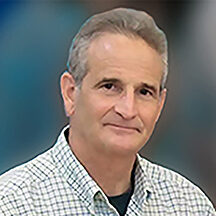Philanthropist-In-Chief
It probably comes as no surprise that America’s leading philanthropist is captivating us again. Remember the days when million-dollar gifts were big things? A new $1 billion-dollar gift from Johns Hopkins University alumnus Michael Bloomberg will allow most medical students to attend Hopkins for free and receive support for living expenses as well as provide financial aid for nursing, public health, and other graduate programs to help ensure access for top talent from middle-class and low-income families. Removing the economic barriers that stand between America’s most promising students from low-income and middle-class families and their dreams of saving lives and making an impact on their communities builds on the transformative impact of Bloomberg’s 2018 gift for undergraduate aid at Johns Hopkins University. Beginning in Fall 2024, Hopkins will offer free tuition for students pursuing an MD who come from families earning under $300,000, a figure that represents 95% of all Americans. Nearly two-thirds of current and entering medical students at Johns Hopkins will immediately qualify for either free tuition or free tuition plus living expenses. Eligible new and returning medical students will receive updated financial aid packages this summer that reflect the gift’s impact. Thank you, Mr. Bloomberg, for once again demonstrating by personal example that good fortune is for sharing!
Monk To Philanthropist

For every Michael Bloomberg there are countless examples of unsung heroes. Consider the inspiring story of Roy Cockrum who never really expected to win a cent whenever he bought a lottery ticket in his home city of Knoxville, Tenn. It was something he did “on and off,” just in case. But, in 2014, he found himself astounded after he matched all six numbers in America’s Powerball lottery game. Those numbers, picked at random in his local supermarket, won him $153 million. What makes his win ironic, though, is that he is a former monk who once took a vow of poverty. Since winning, he has resolved to give away most of his cash to good causes. He is also a former actor, and most of his philanthropic causes will be non-profit theatres across the U.S. Now 68, he is a man who likes to laugh, but not just since being blessed with luck, you sense. He exudes a natural charm and an easy ability to poke fun at himself. But things have not always been easy for him. As an actor and stage manager, he struggled to make ends meet for more than two decades, taking odd jobs to pay the rent. He was waiting tables, bartending and doing “whatever I could find,” he recalls. When he saved up enough money to visit London in 2004, his backstreet hotel room near Victoria station was so tiny, “there wasn’t room to open my suitcase.” He also enjoyed singing and playing the tuba, and studied theatre at Northwestern University in Illinois, before moving to New York and trying his luck as an actor. He worked primarily in off-Broadway and regional theatres, usually in character and comic roles. Decisions about donations are based “purely on the work that is going on there now.” His life took a different path in 2002, when he entered the Episcopal monastery of the Society of Saint John the Evangelist in Cambridge, Mass. and became Brother Roy. Cockrum’s full prize was in fact $259.8 million, but as he decided to take it as a lump sum, the jackpot was reduced to $153 million — paid over a 30-year annuity.
Accountability

In the Give.org Donor Trust Special Report: Public Eye on Charity Accountability, participants are asked to consider their positions and expectations related to a selection of charity accountability themes, including oversight, charity finances, impact, solicitation materials and cause-related marketing, artificial intelligence, and data security. The goal is to keep an eye on emerging charity accountability public priorities.
In an age of distrust, misinformation, and data vulnerability, the top three accountability priorities identified by survey participants are: how the charity spends its money, appeal accuracy, and protection of donor information. When asked to imagine charity appeals including AI-generated images, the majority (54.5%) say they would be discouraged from giving if they knew the appeal was not verified for accuracy by a staff member. Participants with a household income of $200,000 or more are most likely (70.3%) to be discouraged from giving. The recent results show that, for the first time since December 2017, religious organizations are not the most highly trusted charity category. The report also shows that household income shapes how people think and feel about giving. Ultimately, the series aims to shed light on the dynamic relationship between donors and charities, with the goal of strengthening their bond. The ability of the sector to build upon donors’ generosity depends on public trust and on the sector’s alignment with the way people want to be engaged in advancing a greater good.
Cherchez La Femme
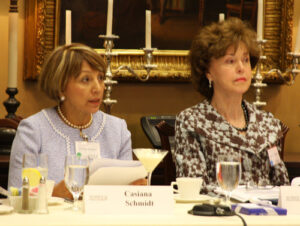
UBS Global Wealth reports that up to $9 trillion is expected to be passed along to spouses and partners in the coming years as part of what’s being called “the horizontal wealth transfer.” Over the next 20 to 30 years, aging baby boomers and older generations are expected to pass down $84 trillion in wealth to charity and family members. Younger generations, including Generation X, millennials and Generation Z are expected to get the bulk of the inheritances. Yet because surviving spouses and partners typically get the initial inheritances, and because women typically outlive men, bequests in the coming years will largely go to women. Life expectancy varies between men and women, and quite frequently couples have an age gap, therefore the inheriting spouse will typically own and hold onto this wealth for an average of four years before passing it on. UBS calls it the “horizontal wealth transfer,” since the wealth is moving intra-generationally rather than intergenerationally. And while little noticed, the horizontal transfers have the potential to reshape the wealth management, investing and luxury spending landscape, which has largely been dominated by men. Most people have a rather feudal idea of wealth going down through generations, but about 10% is likely to go sideways, to spouses or partners not yet giving it to children, although it will shift over time. A McKinsey report estimated that women are expected to control most of the $30 trillion in baby boomer wealth by 2030. While the wealth management industry has been traditionally dominated by male clients and male advisors (accounting for 85% of the latter group), McKinsey said that’s changing fast.
Trust
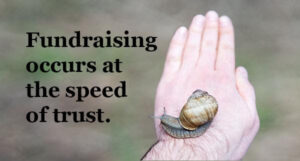
Without the public’s trust, everything we do to advance our collective missions becomes harder, if not impossible. For each of the last five years, Independent Sector has partnered with Edelman Data and Intelligence to survey the American public, exploring the nuances of trust in American nonprofit and philanthropic organizations. These are the largest nationally representative surveys of their kind, surveying over 3,000 adults. Here’s a summary of the key findings:
(1) After four years of decline, trust in non-profits has rebounded by 5 points to 57%.
(2) Trust in philanthropy remains steady at 33%, lower than trust in non-profits.
(3) Americans trust non-profits to reduce national divisions more than they trust corporations, government, or media.
(4) Americans have less trust in non-profits to advocate for public policies and conduct nonpartisan voter engagement.
(5) There are clear pathways for non-profits to increase public trust in the sector.
Monthly Giving Guru

The indomitable Erica Waasdorp, President, A Direct Solution and author of Monthly Giving — The Sleeping Giant and Monthly Giving Made Easy and the most respected expert on monthly giving on the planet was recently in San Antonio to be a keynote speaker at RAISE24, the Catholic Fundraising Conference. We enjoyed a lovely dinner with her, showing off some of our Texas barbecue. In return, she is promising us lobster rolls when get the chance to visit her on beautiful Cape Cod, Mass. During her keynote address she highlights several of the compelling reasons for non-profits of all different sizes and from all different sectors to feature monthly giving in their resource development programs: (1) Monthly giving programs are especially effective to engage smaller donors; (2) They improve donor retention multi-fold; (3) Monthly donors give more money than one-time donors, typically unrestricted; (4) Monthly donors are 6 times more likely to leave the organization in their will; (5) Every non-profit has the resources in-house to start growing monthly donors; (6) You can engage with existing monthly donors during giving days and other opportunities during the year, on top of their monthly gifts; (7) Monthly giving continues to grow in popularity because it is easy for non-profits of all sizes to implement and it empowers donors to give in a way that is most comfortable for their budget. Erica has honored us as a subject matter expert in several webinars and watch for her participation in the 2025 series. In addition to being one of the most in-demand speakers on the fundraising circuit, Erica is just a thoroughly kind, caring and thoughtful individual and it’s a pleasure to call her a friend.
Prospect Research

Prospect researchers are up to their ears in data — and usually with requests. Responding to individual needs probably occupies most of their day but reacting to requests is not the best way to spend precious time. To have the biggest impact on your organization, you’ve got to turn the tables and start proactively researching so you can identify the strongest prospects. From Michael Van Dyke, Blackbaud’s Principal Business Consultant to help you take the reins and contribute more donors and dollars, here are the top four most effective tips for prospect research:
(1) Make More Accurate Gift Capacity Estimates: Gift capacity is a sensitive subject. You can’t work with major donors without having a few missed estimates. Sometimes you just don’t have access to the right data. Plus, you see just the tip of the iceberg when doing research. Only when a gift officer starts talking to a prospect via the qualification and the cultivation process can you know how much someone will give to your organization.
(2) Analyze Your Prospects’ Philanthropic Interests: You’re a matchmaker. Your discovery work connects your institution to enthusiastic donors and prospects to causes they find meaningful. Be nosy! You wouldn’t set up friends on a date without knowing if they’re compatible. The same should be true of your institution and potential major donors. Find out how your prospect’s philanthropic priorities align with your institution. Pinpointing exactly where your institution’s needs overlap with a prospect’s interests leads to donations instead of missed connections.
(3) Prioritize Who Gets Research Time: Your research hours shouldn’t be wasted finding qualified prospects — software trawling your donor database can do that. Instead, make the most of your time by providing in-depth information on the prospects already qualified by your software. Uncover the top 5% of prospects for both wealth and affinity.
(4) Highlight Emerging Prospects: Great prospect researchers are always thinking about the donor pipeline. Make proactive research on emerging prospects part of your weekly routine. The work you do now won’t identify current major gift prospects, rather it will identify future candidates. When you know more about your current committed midlevel donors, it’s easier to create programming that will help them grow their philanthropy with you over the long term.
Sock It To Them

Pair of Thieves, the leading men’s basics company renowned for its innovative designs, introduces the “Power of 10” campaign, a charitable initiative supporting underserved groups and minorities in celebration of the brand’s 10-year anniversary. Through the give back initiative, Pair of Thieves will donate a total of 100,000 pairs of socks, with 10,000 pairs going to 10 worthy charitable organizations across the country. Pair of Thieves is the leading men’s basics company renowned for its innovative designs. The initiative serves as an extension of Pair of Thieves’ existing Good Fits program, which stands as a testament to the brand’s commitment to positively impacting its customers and uplifting communities in need. Since its inception in 2014, Pair of Thieves has launched several collections, annually supported through donations and funds for meaningful causes like mental health awareness and support of minority groups not limited to the LGBTQIA+ community and the unhoused.
Marketing Benchmarks

For 25 years, Mighty Citizen has helped mission-driven organizations increase their impact and improve the world by creating deeper connections with their audiences. They are proud to partner with non-profits, associations, educational institutions, and government agencies as they seek to make positive change in the world. For non-profits that feel their marketing can benefit from more leadership buy-in and greater resources, fear not! Part of the inspiration for creating The Mighty GPS — and for compiling this year-long study — is to empower non-profits with an objective, data-driven tool to make a strong case for more resources. Highlights:
(1) Year-over-year, the marketing of non-profits saw improvements. In 2024, most non-profits found themselves at a respectable Walking stage of maturity, inching closer to the Running stage.
(2) The Team Dynamics category saw the largest increase in marketing maturity.
(3) High-performing non-profits with strong research and data gathering processes garner nearly 625x more organic clicks from search. That means more awareness, more engagement, more donations, and a greater impact.
(4) While non-profits excel in their use of digital tools, most aren’t maximizing one of the most powerful tools in their arsenal for generating targeted communications — their Marketing Automation Platforms (MAPs).
(5) While non-profits are making the most out of their often limited resources, they are struggling to prioritize research and gather useful data to help fuel better marketing decisions.
(6) The most mature marketing teams conduct audience surveys to create content aimed at specific audiences, creating a superior user experience.
(7) The data shows a strong correlation between high marketing maturity scores and robust marketing budgets.
(8) Like last year, the highest performing non-profits soar when they set specific, measurable goals for their marketing campaigns.
On Bookshelf: Deep Work
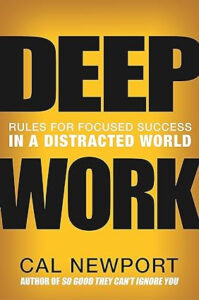
Deep work is the ability to focus without distraction on a cognitively demanding task. It’s a skill that allows you to quickly master complicated information and produce better results in less time. Deep Work will make you better at what you do and provide the sense of true fulfillment that comes from craftsmanship. In short, deep work is like a superpower in our increasingly competitive twenty-first century economy. And yet, most people have lost the ability to go deep spending their days instead in a frantic blur of e-mail and social media, not even realizing there’s a better way. In Deep Work, author and professor Cal Newport flips the narrative on impact in a connected age. Instead of arguing distraction is bad, he instead celebrates the power of its opposite. Dividing this book into two parts, he first makes the case that in almost any profession, cultivating a deep work ethic will produce massive benefits. He then presents a rigorous training regimen, presented as a series of four “rules,” for transforming your mind and habits to support this skill: (1) Work Deeply; (2) Embrace Boredom; (3) Quit Social Media; (4) Drain the Shallows. A mix of cultural criticism and actionable advice, Deep Work takes the reader on a journey through memorable stories — from Carl Jung building a stone tower in the woods to focus his mind, to a social media pioneer buying a round-trip business class ticket to Tokyo to write a book free from distraction in the air — and no-nonsense advice, such as the claim that most serious professionals should quit social media and that you should practice being bored. Deep Work is an indispensable guide to anyone seeking focused success in a distracted world.
Fighting Loneliness

Many people report feeling lonely and isolated, especially after the pandemic. The 5-3-1 rule helps you reflect on the quality and quantity of your social interactions. Kasley Killam, author of The Art and Science of Connection, says that she can relate to loneliness sneaking up on her, “as someone who’s introverted and will happily stay at home by myself or with my husband.” Killam broke down the 5-3-1 rule — and what to do if you find it hard to follow.
(1) Spend time with five different people a week. More diverse connections are linked to higher well-being.
(2) Nurture at least three close relationships: While it’s great to expand your social network, Killam stresses the importance of focusing on about three deep relationships, based on her research of socially happy people across various cultures.
(3) Aim for one hour of quality connection every day: That doesn’t have to be all at once, it can be 10 minutes here, 10 minutes there.”
Quiz: States and Volunteering
For the past 20 years, AmeriCorps has collaborated with the US Census Bureau to collect data on volunteering and civic engagement to take the pulse of our nation’s civic health. The Current Population Survey Civic Engagement and Volunteering Supplement is the most robust longitudinal survey about volunteerism and other forms of civic engagement in the United States. The data examines rates of organizational volunteering, helping others informally, charitable giving, and other civic behaviors. Match the following states with their respective percentage of citizens who volunteer (the higher the better). Answers are shown below.
1. Florida
2. Minnesota
3. Texas
4. Utah
5. Vermont
Stratagems is published monthly by Jim Eskin, Founder of Eskin Fundraising Training, LLC. We offer workshops and customized training sessions for board members, staff and volunteers of non-profit organizations of all kinds and sizes. For details about our services and information, or to find out how to schedule a training session for your organization, visit our website. Follow our events on Facebook, and read more articles about philanthropy on our LinkedIn page.
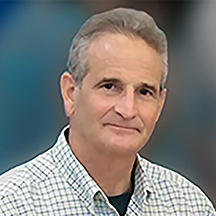
Jim Eskin, Founder
Eskin Fundraising Training
Email: [email protected]
Cell: 210.415.3748
www.eskinfundraisingtraining.com
ANSWERS TO THIS MONTH’S QUIZ: 1=a, 2=d, 3=b 4=e, 5=c |



